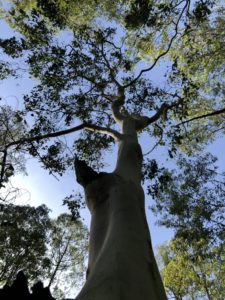Hi Everyone,
How much of your day is spent in expereintial touch with a sense of the sacred as you understand it? How would your life be different if you were to deliberately cultivate that connection to the sacred? This weeks article explores this question.
You can also find below the dates and titles for classes in March.
Yours in the spirit of the sacred,
Toby
Upcoming Meditation Classes and Events in March (Full details to follow next week)
Wednesday March 14th, 7.30-8.30pm Meditation Class at Basic Essence: “Awakening to the Sacred – Discovering the benefits of developing a contemporary spiritual practice and meditation practice.”
Wednesday February 21st 7.30-9pm – Zen Walking and Sitting Meditation: “Meditating on The Present Moment: Gateway to Eternity”.
Wednesday March 7th, 14th, 21st, 28th 10.30-11.30am – Qi gong meditation classes at Basic Essence.
 Article of the Week:
Article of the Week:
Mindfulness of the Sacred
We are moving apartments at the moment, and one of the ways that I have been trying to glide through all of the confusion and monotony of box packing is to cultivate regular mindfulness of the sacred or, to put it another way, to bring a sense of the sacred into my day at regular intervals.
What is a sense of the sacred? One way of defining a sacred state of mind is this:
“Sacred awareness is a state of mind where we are simultaneously aware of the wholeness and universality that pervades all life, whilst at the same time having a sense of the preciousness of our own unique individuality, and how the flowering of that individuality is continually cared for and nurtured by God/the creative forces of the Universe/the Tao(or insert expression of choice)”.
So, looked at this way we could say that when we are aware of the sacred we feel life as a whole is a precious and beautiful thing, and that we in whatever small way may have something to add to that preciousness and beauty by living out our life in the best way we can.
So, working with this basic definition of the sacred, you might like to ask yourself, “What stimulates a sense of the sacred within me? What objects, memories or people? How can I bring my mind back to this sense of sanctity at regular times in my daily life in order that I can live my life within the context of a living sense of its sanctity?”
When it seems more than ever before there is more opportunity for cynicism, and for feeling over burdened simply by the over demands of the logistics of our life, deliberately reconnecting to a sense of the sacred at regular times in our day can be an invaluable tool for navigating the challenges of our life more smoothly, humanely and courageously.
© Toby Ouvry 2011, you are welcome to use or share this article, but please cite Toby as the source and include reference to his website www.tobyouvry.com


